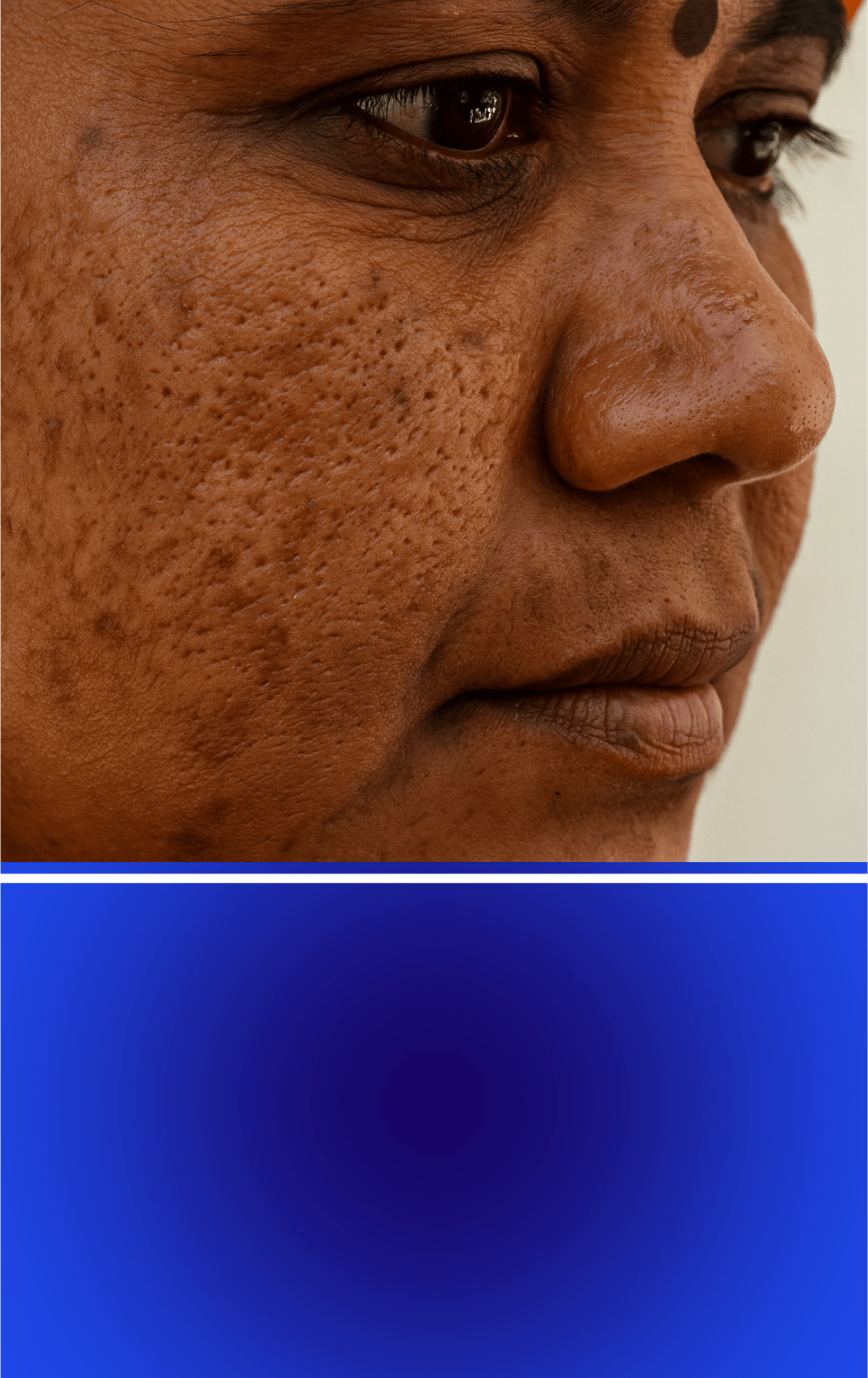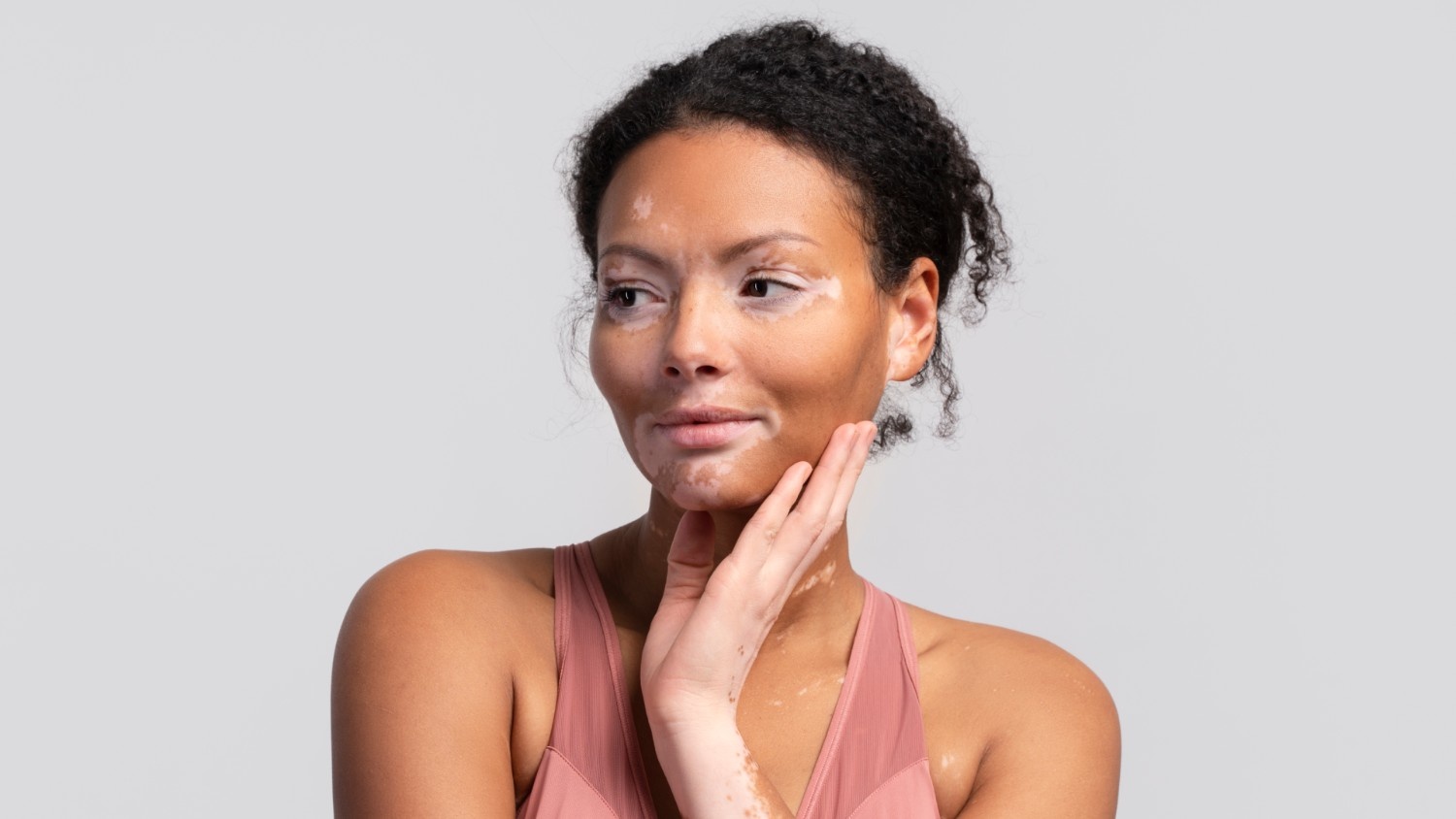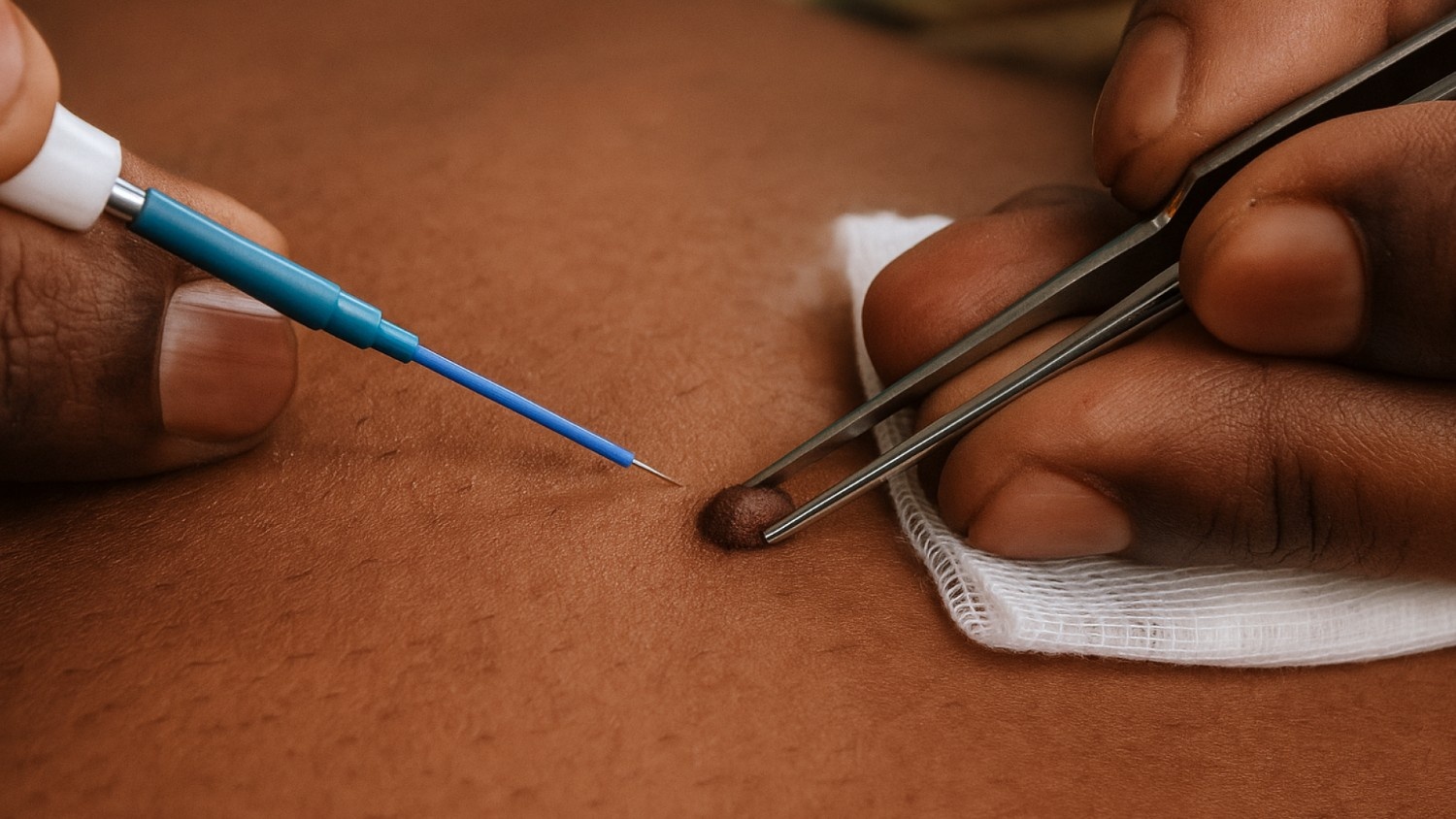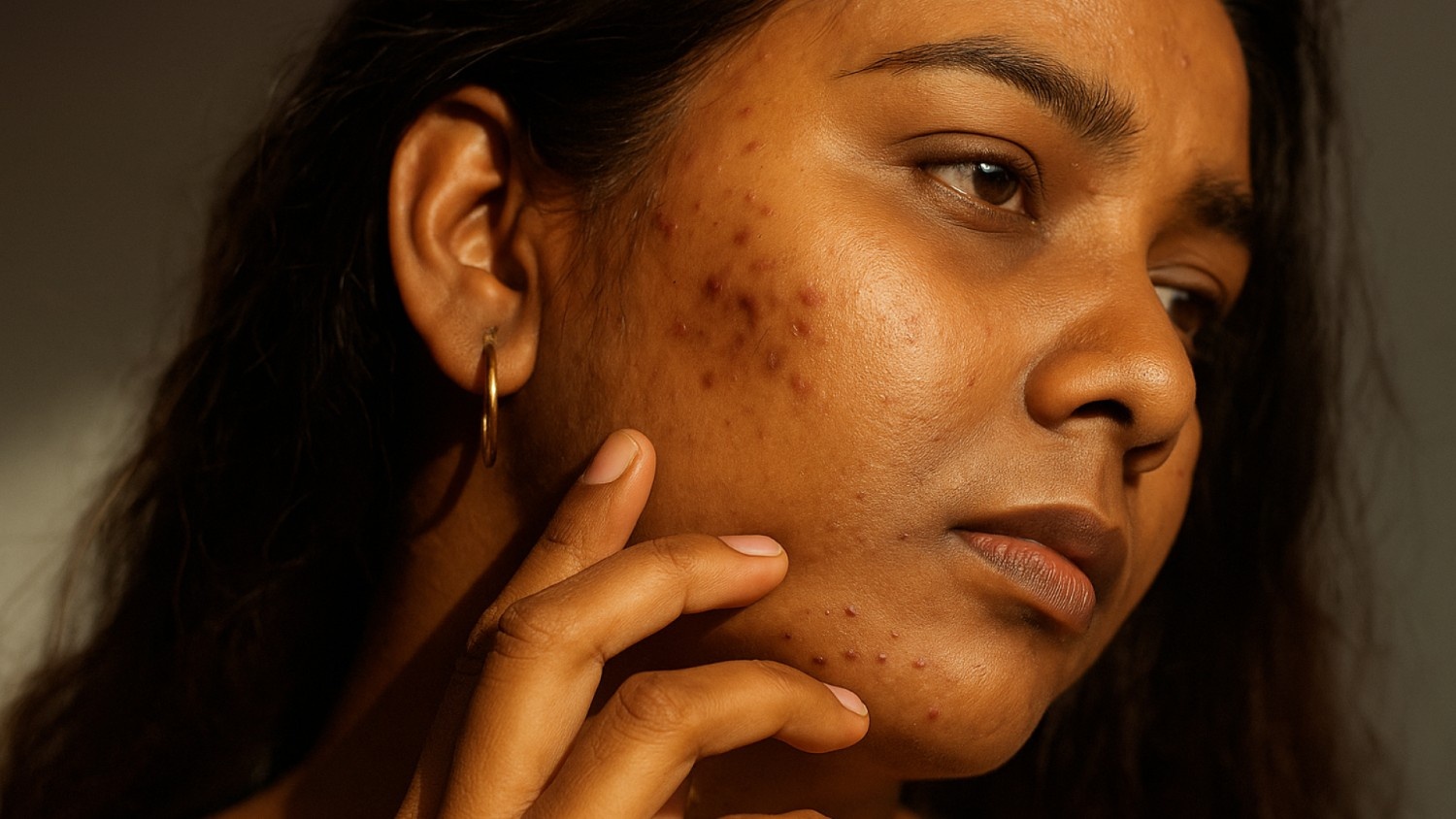It’s common to feel concerned when your skin tone starts to look uneven, especially after sun exposure. You might notice darker patches, lingering discolouration, or a change in how your skin reacts to light. For many individuals, the line between tanning and pigmentation often feels blurred, making it difficult to understand what’s normal and what might need medical attention.
In fact, the rise in awareness around skin tone has grown alongside industry trends. According to DiMarket, the global demand for self-tanning cosmetics is expected to cross several billion units by 2033.
Meanwhile, data from the International Journal of Research in Dermatology shows that more than 80% of people in Indian cities experience uneven skin tone, with hyperpigmentation being a frequent issue.
This blog explains the difference between tan and pigmentation, helping you understand what’s affecting your skin. It covers causes, types, risk factors, treatment options, and long-term outcomes.
Quick Overview
- Tanning is a temporary darkening of the skin due to sun exposure; pigmentation involves deeper, often chronic changes in melanin.
- Tanning usually fades with time and sun protection, while pigmentation may need medical treatment.
- Both can affect skin tone, but pigmentation often signals underlying skin concerns or hormonal triggers.
- Treatment for pigmentation includes lasers, chemical peels, and dermatologist-guided skincare.
- Velantis Dermatology offers personalised, evidence-based care to manage uneven skin tone safely and effectively.
What is Tanning and Pigmentation?
Understanding the basic difference between tanning and pigmentation is important when assessing changes in your skin tone.
Tanning
Tanning is the process by which your skin becomes visibly darker after being exposed to Ultraviolet (UV) rays, most often from sunlight. This darkening happens because your body increases melanin production to help protect the outer layer of skin. Tanning is typically temporary and affects only the surface layers.
Pigmentation
Pigmentation refers to the natural colour of your skin, which is controlled by the type and amount of melanin made by specialised cells called melanocytes. When this process becomes uneven, it can lead to areas of darker (hyperpigmentation) or lighter (hypopigmentation) skin. These changes can be long-lasting and are often linked to internal or external factors that affect melanin production.
Causes of Tanning and Pigmentation
Understanding what leads to tanning and pigmentation is essential for identifying the right course of treatment. While both involve melanin activity, the underlying causes differ in how they affect the skin.
Tanning
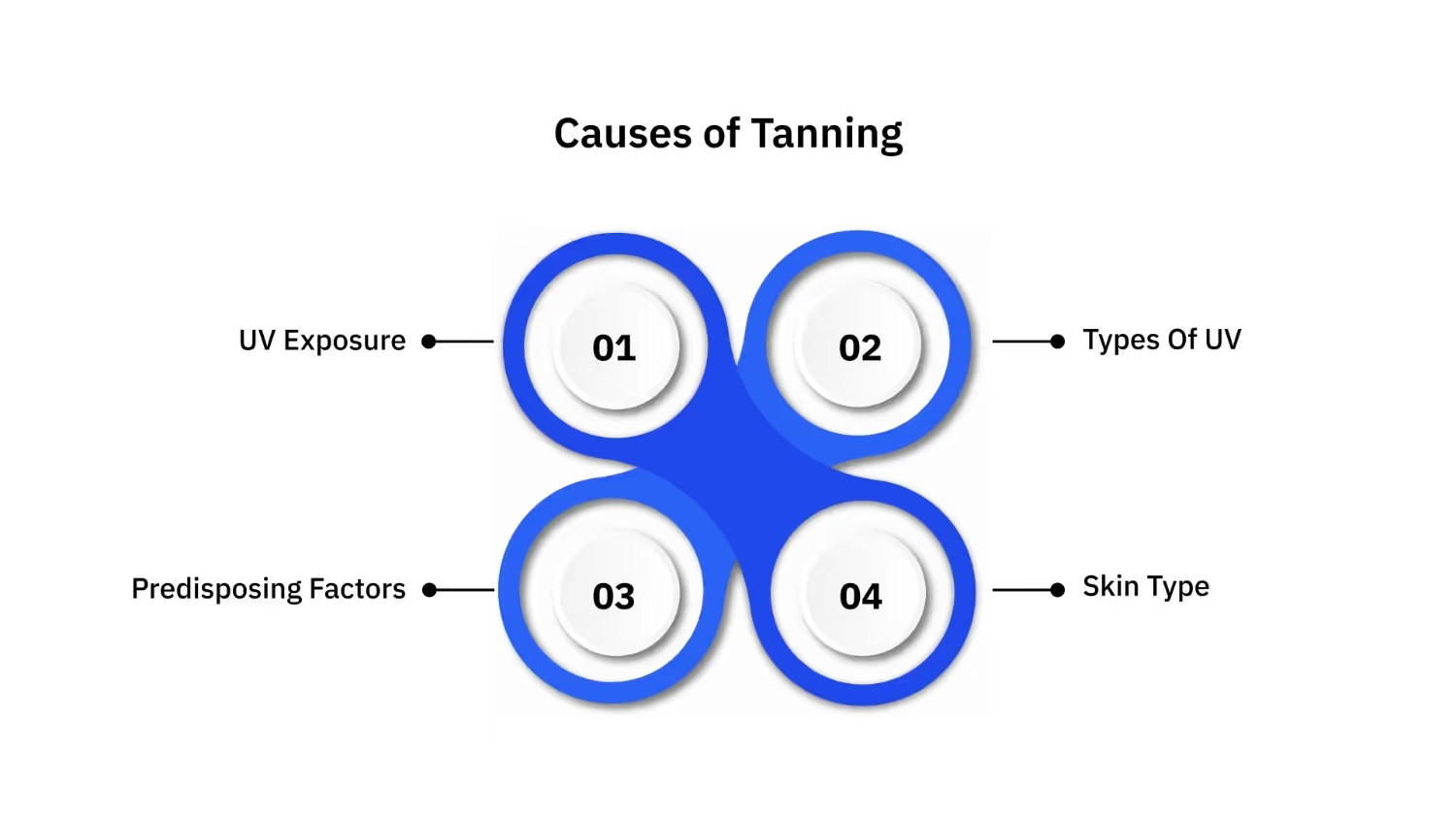
Below are the key causes of tanning:
- UV Exposure: When your skin is exposed to ultraviolet rays, it responds by increasing melanin production. This pigment, created by melanocytes, helps shield the deeper layers of your skin from further UV damage.
- Types of UV: Both UVA and UVB rays contribute. UVA rays darken existing melanin quickly, while UVB rays prompt the skin to make more melanin, leading to longer-lasting tanning.
- Predisposing Factors: Spending extended time in direct sunlight, especially during peak hours, raises your chances of tanning. Surfaces like water, sand, or concrete can reflect sunlight and intensify UV exposure.
- Skin Type: People with lighter skin tones may burn more easily, but tanning can affect any skin type with sufficient UV exposure.
Pigmentation

Here are the main factors that lead to pigmentation:
- Sun Exposure: UV rays remain one of the main triggers. Unlike tanning, which fades, this exposure can lead to uneven melanin production and the development of stubborn dark patches.
- Hormonal Imbalances: Changes in hormone levels, such as during pregnancy or while taking contraceptive pills, can overstimulate melanocytes and lead to conditions like melasma.
- Genetic Factors: Your inherited skin traits can make you more likely to experience pigmentation irregularities over time.
- Medications: Certain drugs, including some antibiotics and hormonal therapies, may lead to increased pigmentation as a side effect.
- Skin Injury or Inflammation: Conditions such as acne, eczema, or even minor cuts can trigger post-inflammatory hyperpigmentation, where darker spots remain after healing.
- Underlying Health Conditions: Some medical conditions, such as Addison’s disease, can present with visible pigmentation changes, especially in specific areas of the body.
Types of Tanning and Pigmentation
Tanning and pigmentation each appear in different forms, depending on how melanin is distributed in the skin. Recognising the type helps guide diagnosis and treatment planning.
Tanning
Tanning can be broadly classified into two types:
- Immediate Tanning: This occurs shortly after sun exposure. It’s mainly caused by UVA rays and results in a temporary darkening of existing melanin. The effect is usually short-lived and fades within hours to a few days.
- Delayed Tanning: This develops several hours to days after exposure and is caused by UVB rays. It involves the production of new melanin and typically results in longer-lasting skin darkening.
Pigmentation
Pigmentation disorders present in several clinically recognised types:
- Hyperpigmentation: A condition where certain areas of the skin become darker due to increased melanin. Common forms include melasma, age spots (solar lentigines), and post-inflammatory hyperpigmentation.
- Hypopigmentation: This is when patches of skin become lighter due to reduced melanin. Conditions like vitiligo or post-inflammatory hypopigmentation fall under this category.
- Depigmentation: Refers to the complete loss of pigment in certain areas, often seen in advanced stages of vitiligo or as a result of certain chemical exposures or skin damage.
Dealing with uneven skin tone or stubborn pigmentation? At Velantis Dermatology, treatment isn’t one-size-fits-all. Every plan is designed around your skin’s unique needs, with safe, evidence-based care. Book a consultation now!
Appearance of Tanning and Pigmentation
The following are the typical appearance features of tanning and pigmentation. While both involve changes in skin colour, they differ in how they present on the skin’s surface.
Tanning
Below are the common appearance features of tanning:
- Colour: Usually a warm brown or bronze tone, depending on your skin type.
- Pattern: Evenly spread across sun-exposed areas such as the face, arms, and neck.
- Texture: Skin may feel slightly dry or rough, but generally retains a normal texture.
- Symmetry: Typically symmetrical due to equal sun exposure.
Pigmentation
Below are the typical appearance characteristics of pigmentation:
- Colour: May appear as dark brown, grey, black (hyperpigmentation), or lighter patches (hypopigmentation).
- Pattern: Irregular and localised, often affecting specific areas of the face or body
- Texture: The skin texture usually stays unchanged, but the colour variation is noticeable.
- Symmetry: Can be symmetrical (e.g., melasma) or asymmetrical depending on the cause.
Distribution (Body Areas Affected)
The following outlines where tanning and pigmentation most commonly appear on the body, helping to support accurate diagnosis and treatment planning.
Tanning
Below are the common body areas affected by tanning:
- Face: Especially the forehead, nose, cheeks, and upper lip.
- Neck and Shoulders: Frequently exposed and often darker than covered areas.
- Arms and Hands: Regular sun exposure makes these areas prone to visible tanning.
- Back and Chest: Particularly affected during outdoor activities or sunbathing.
- Feet: If uncovered, feet may also develop visible tan lines.
Pigmentation
Here are the typical body areas where pigmentation changes are observed:
- Face: Common sites include the cheeks, upper lip, forehead, and around the eyes.
- Neck: Often affected in conditions like acanthosis nigricans or post-inflammatory changes.
- Back and Chest: May show signs of pigmentation from acne or inflammatory skin issues.
- Arms and Legs: Post-inflammatory pigmentation is common after injuries or rashes.
- Hands and Feet: In some cases, pigmentation changes appear on the palms, knuckles, or soles, especially in systemic conditions.
Risk Factors of Tanning and Pigmentation
The likelihood of developing tanning or pigmentation varies based on individual characteristics, lifestyle habits, and environmental exposures. Recognising these risk factors can help you take preventive steps and seek timely care.
Tanning

Here are the key factors that increase your risk of tanning:
- Prolonged Sun Exposure: Spending extended time outdoors, especially during peak UV hours.
- Lack of Sun Protection: Not using sunscreen, hats, or protective clothing increases vulnerability.
- Skin Type: Fairer skin tones tend to tan or burn more easily due to lower melanin levels.
- Outdoor Activities: Frequent exposure through travel, sports, or occupational routines.
- Geographical Location: Living in regions with intense sunlight and a high UV index.
Pigmentation
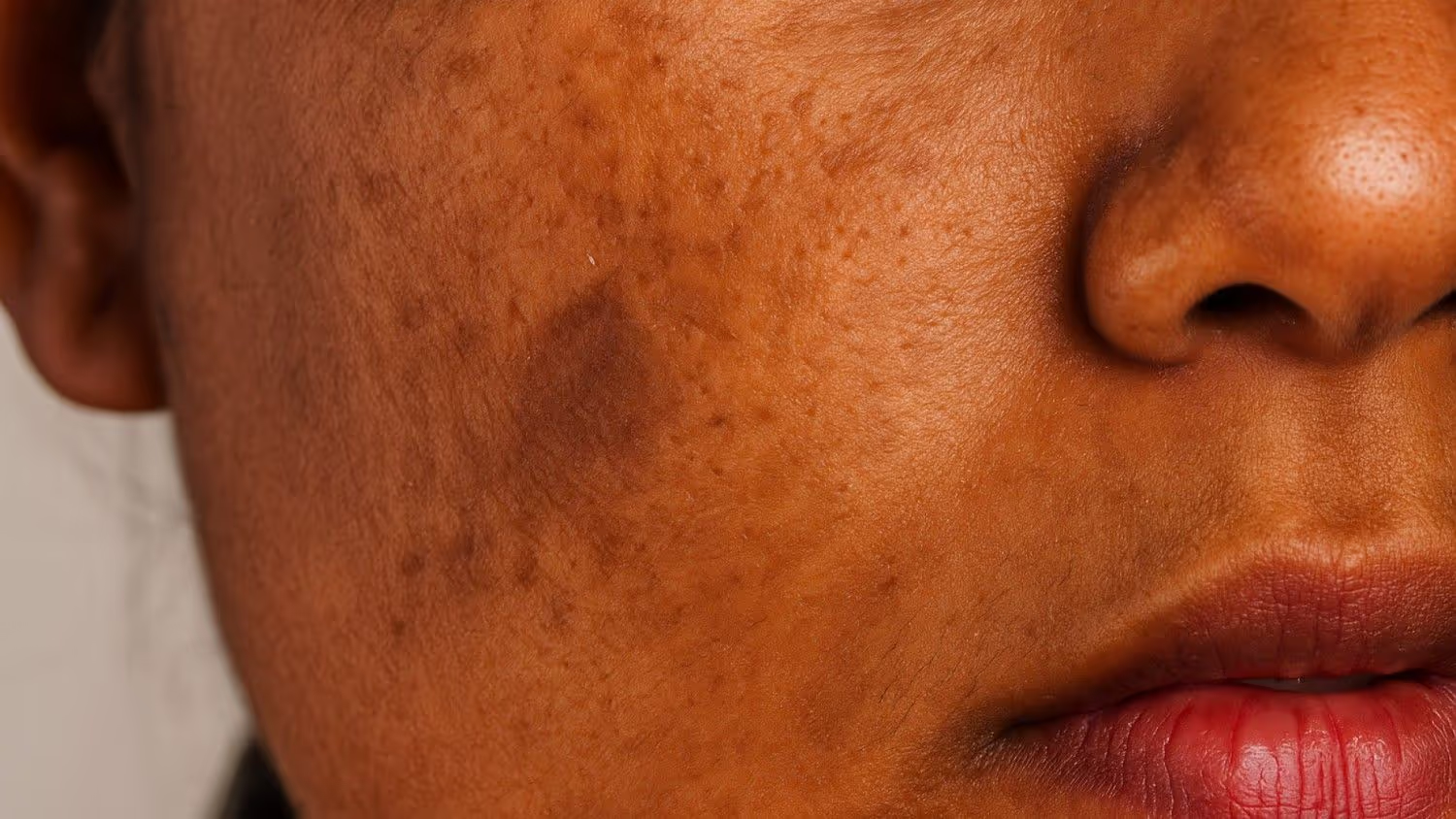
Below are common risk factors associated with pigmentation issues:
- Hormonal Changes: Pregnancy, menopause, and contraceptive use may trigger pigmentation.
- Genetic Predisposition: A family history of pigmentation disorders increases your chances.
- Skin Trauma or Inflammation: Conditions like acne or eczema can lead to lingering dark spots.
- Certain Medications: Some drugs may stimulate excess melanin production.
- Chronic Sun Exposure: Ongoing UV damage may lead to uneven pigmentation over time.
- Underlying Health Conditions: Hormonal or autoimmune disorders may also play a role.
Chronicity
The duration and persistence of tanning and pigmentation differ significantly. Knowing how long each tends to last can guide treatment expectations and care planning.
Tanning
Here are the key points related to the chronicity of tanning:
- Temporary Nature: Tanning is typically short-term and fades gradually as the skin renews itself.
- Fades Over Time: With reduced sun exposure and regular skin care, the tan often lightens within days to a few weeks.
- Variable Duration: How long it lasts can depend on the intensity of UV exposure and individual skin response.
- May Recur Easily: Tanning returns quickly with repeated sun exposure if preventive measures aren’t used.
Pigmentation
The following are typical features of pigmentation in terms of chronicity:
- Long-Lasting: Pigmentation changes, especially hyperpigmentation, tend to persist over time without treatment.
- Slow to Improve: These marks often take months or longer to fade, even with care.
- Chronic in Nature: In some cases, such as melasma or post-inflammatory pigmentation, recurrence is common.
- Requires Ongoing Management: Consistent sun protection and medical treatment are often needed to manage or prevent progression.
If you’ve tried home remedies or over-the-counter creams with little change, it may be time to see what expert care can do. Velantis Dermatology offers personalised solutions backed by science. Schedule your appointment today!
Treatment Approaches
Managing tanning and pigmentation requires different clinical strategies, as each affects your skin in distinct ways. Below are commonly used treatment options under medical supervision.
Tanning
Tanning usually responds well to simple preventive and supportive care.
- Sun Protection: Using a broad-spectrum sunscreen daily protects your skin from further UV damage. Protective clothing and staying in the shade are equally important to limit exposure.
- Topical Creams: Lightening agents prescribed by a dermatologist may gradually help even out skin tone. These are often used in combination with other therapies for better results.
- Chemical Peels: Peels with glycolic or trichloroacetic acid exfoliate surface layers of tanned skin, encouraging healthy skin renewal. These require expert application and may involve a short recovery period.
- Laser Toning: Q-switched Nd: YAG laser selectively targets melanin buildup, helping to reduce tan and mild pigmentation. It typically requires multiple sessions for visible improvement.
- Microdermabrasion: This non-invasive technique gently removes dead skin cells and surface-level tanning. Regular sessions can improve skin texture over time.
- Intense Pulsed Light (IPL) Therapy: IPL delivers light pulses that break down excess melanin, offering gradual improvement in tanning with minimal downtime.
Pigmentation
Treating pigmentation often requires a more targeted, long-term approach.
- Topical Treatments: Dermatologist-recommended creams with ingredients like hydroquinone, kojic acid, azelaic acid, or niacinamide help reduce melanin production.
- Chemical Peels: Superficial peels using glycolic acid or salicylic acid may assist in lightening dark patches.
- Laser Therapy: Specific pigment-targeting lasers can be used for deeper or resistant pigmentation, based on clinical evaluation.
- Oral Medications: In select cases, medications like tranexamic acid may be prescribed to manage melasma.
- Ongoing Sun Protection: Consistent use of sunscreen remains critical, as UV exposure can reverse treatment progress.
Now, to help you better understand the difference between tan and pigmentation, here is a clear table comparing their key characteristics.
Tabular Difference Between Tanning and Pigmentation
Understanding the difference between tanning and pigmentation is important when identifying changes in your skin tone. While both involve melanin, they vary in causes, appearance, and how they respond to treatment.
Conclusion
Now that you understand how tanning and pigmentation differ in causes, appearance, triggers, and treatment needs, the next step is knowing when professional care is required. While some concerns, like tanning, may fade with time and protection, persistent pigmentation often needs medical attention.
At Velantis Dermatology, you receive ethical, evidence-based care under the guidance of our MD Dermatologist, Dr. Janani Sree C M. Each treatment plan is carefully customised to your pigmentation type, skin tone, and daily routine, whether that includes precise laser selection, clinically supported chemical peels, or medical-grade skincare.
Sun protection also plays a vital role in long-term success. With a science-led approach and compassionate care, Velantis offers advanced solutions designed to restore balance to your skin.
Book your consultation today to take the first step towards healthier, even-toned skin!
Frequently Asked Questions
Q1. What is the main difference between tanning and pigmentation?
A1. Tanning and hyperpigmentation both involve melanin increase, but tanning is typically a temporary physiological response, while hyperpigmentation is more persistent and often requires treatment.
Q2. How does tanning develop on the skin?
A2. When exposed to UV rays, melanocytes in the skin produce more melanin to protect deeper layers. This leads to a darker skin tone. While it’s a protective response, repeated or excessive tanning can cause long-term skin damage.
Q3. What are the causes of pigmentation apart from the sun?
A3. Pigmentation issues may also arise due to hormonal imbalances, genetic predisposition, skin injuries like acne, certain illnesses, or side effects of medications. These changes often appear as uneven, persistent patches.
Q4. Is tanning long-lasting like pigmentation?
A4. Tanning usually fades with time if sun exposure is minimised. Pigmentation, on the other hand, can be more stubborn. Depending on the cause and depth, it may persist and require targeted medical treatment.
Q5. How can tanning and pigmentation be prevented?
A5. Preventive care starts with broad-spectrum sunscreen, avoiding peak sun hours, and wearing protective clothing. For pigmentation linked to internal or medical factors, it’s important to consult a dermatologist who can identify the cause and suggest appropriate care.
Q6. Do treatment approaches for tanning and pigmentation differ?
A6. Yes. Tanning typically improves with sun avoidance, topical antioxidants, and gentle exfoliation. Pigmentation treatment depends on its type and origin; it may involve prescription creams like retinoids or vitamin C, and sometimes in-clinic procedures tailored to the condition.
Q7. Is it important to consult a dermatologist for pigmentation issues?
A7. Definitely, some pigmentation changes could signal underlying conditions or worsen if mismanaged. A dermatologist ensures an accurate diagnosis and offers evidence-based treatment, especially for those with existing skin concerns.
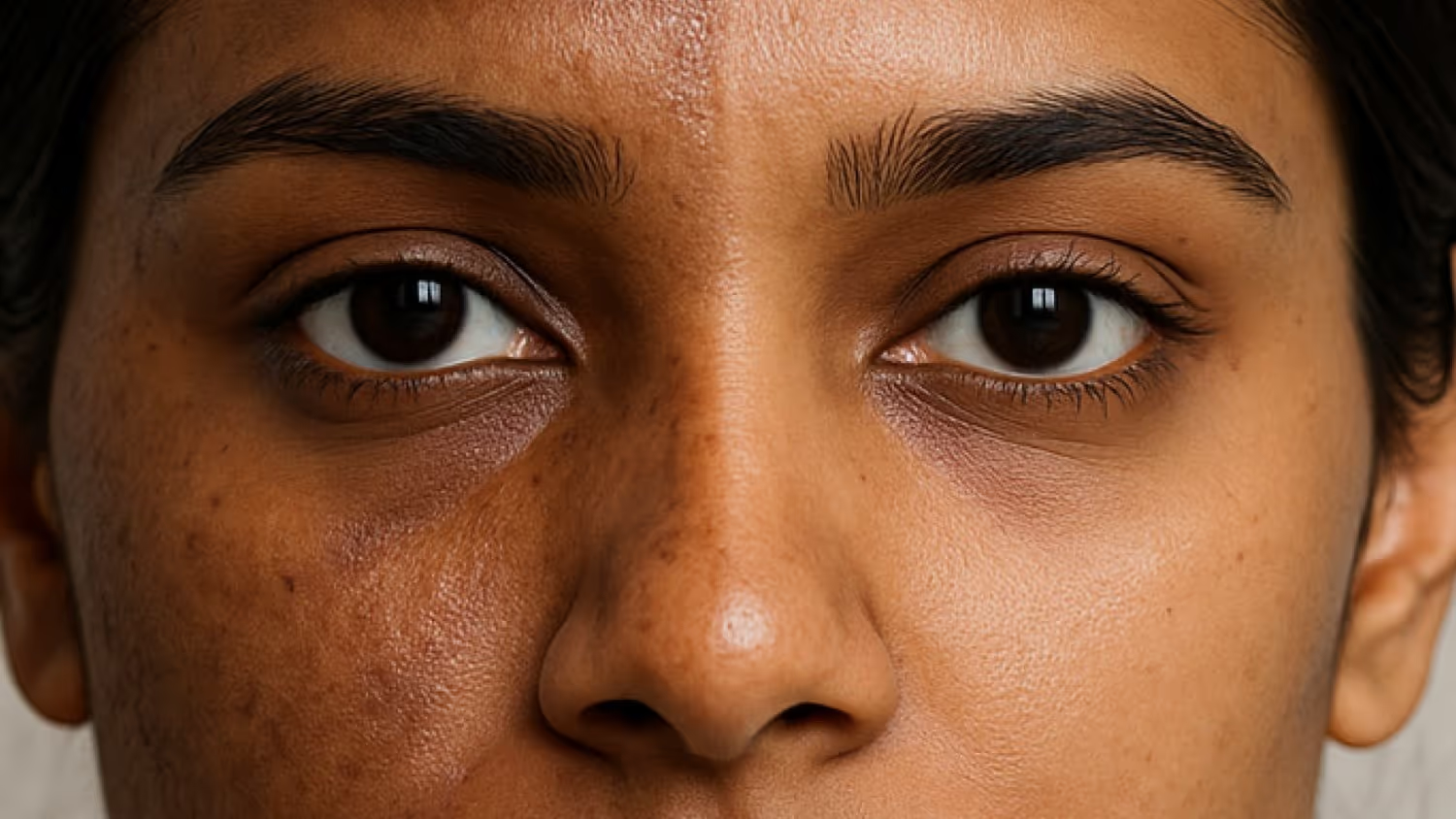

.png)
